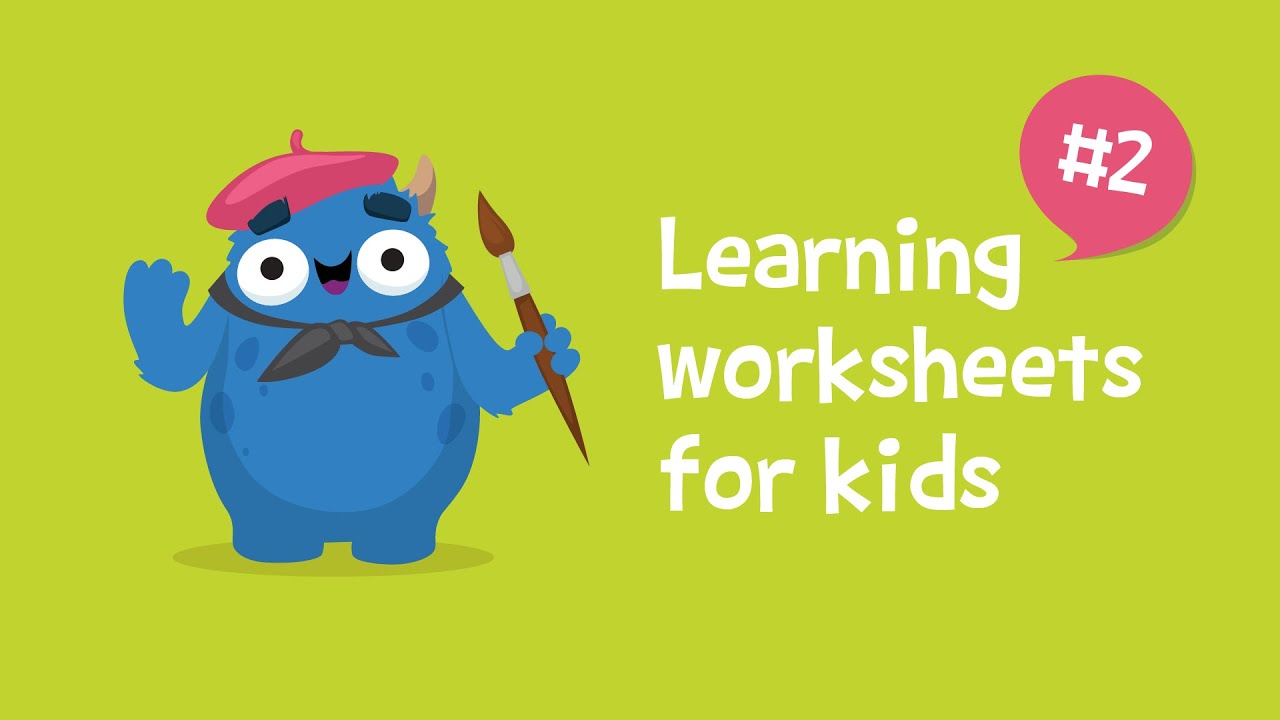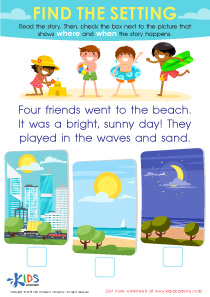Visual discrimination Easy Worksheets for Ages 4-8
5 filtered results
-
From - To
Enhance your child's visual discrimination skills with our Easy Worksheets designed for ages 4-8. These engaging printables help young learners identify similarities and differences in shapes, colors, and patterns, laying a strong foundation for critical thinking and observation. Ideal for home or classroom use, our worksheets encourage independent learning while keeping children entertained. From fun matching games to delightful puzzles, each activity is tailored to captivate and educate little minds. Explore our collection and support your child's development in a playful and effective way. Perfect for early learners, our worksheets make learning enjoyable and impactful!
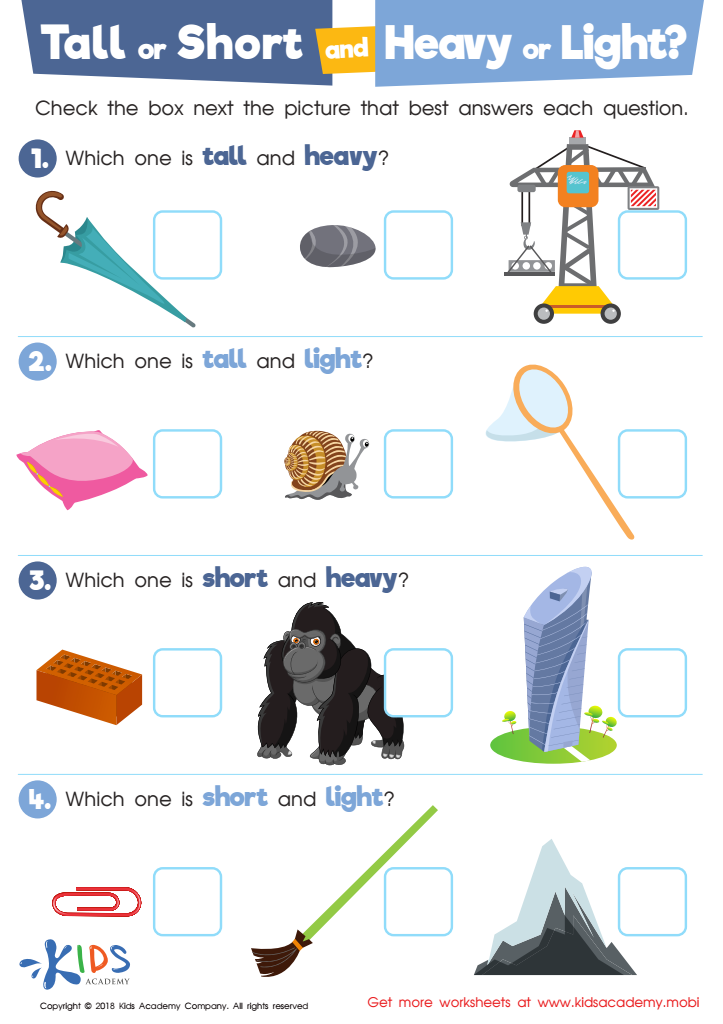

Tall or Short and Heavy or Light? Worksheet
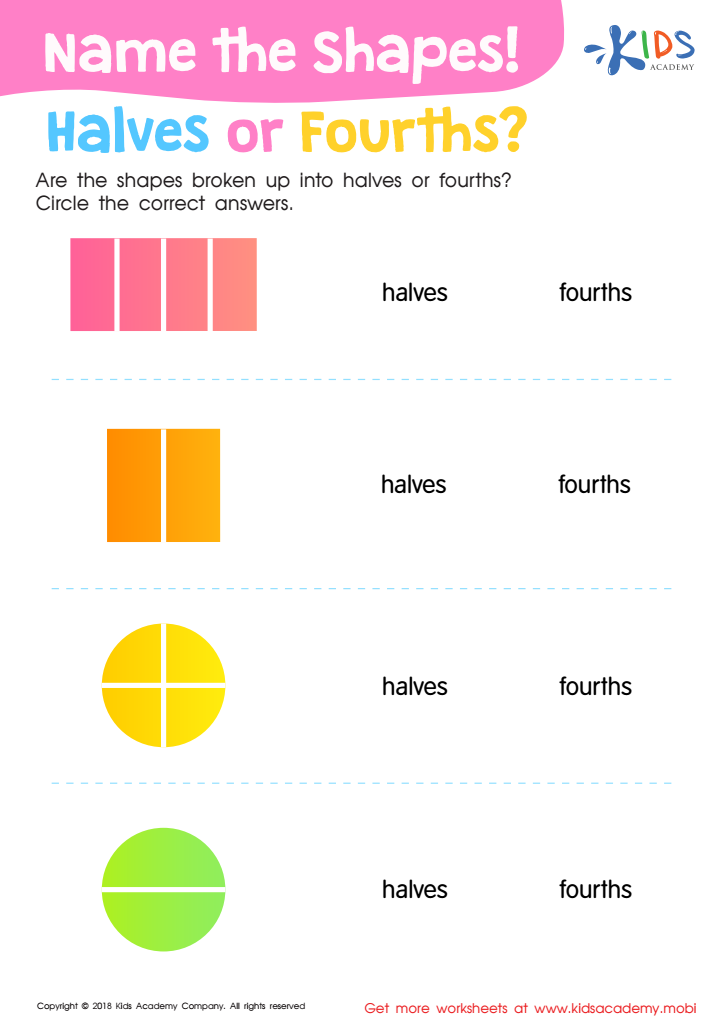

Name the Shapes Halves or Fourths? Worksheet
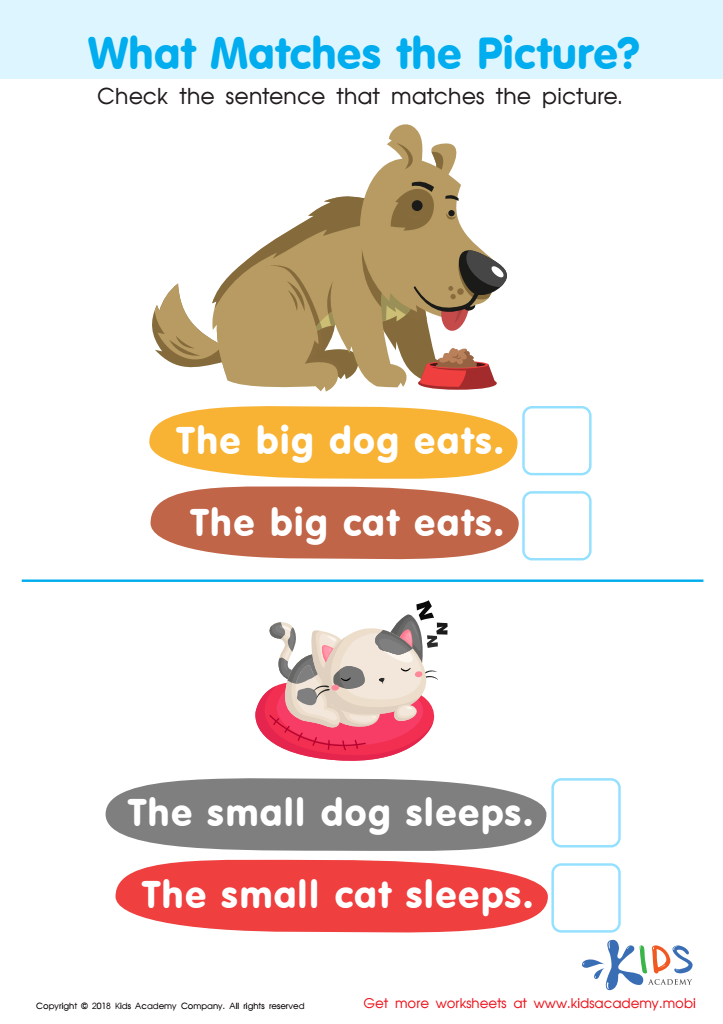

What Matches the Picture? Worksheet
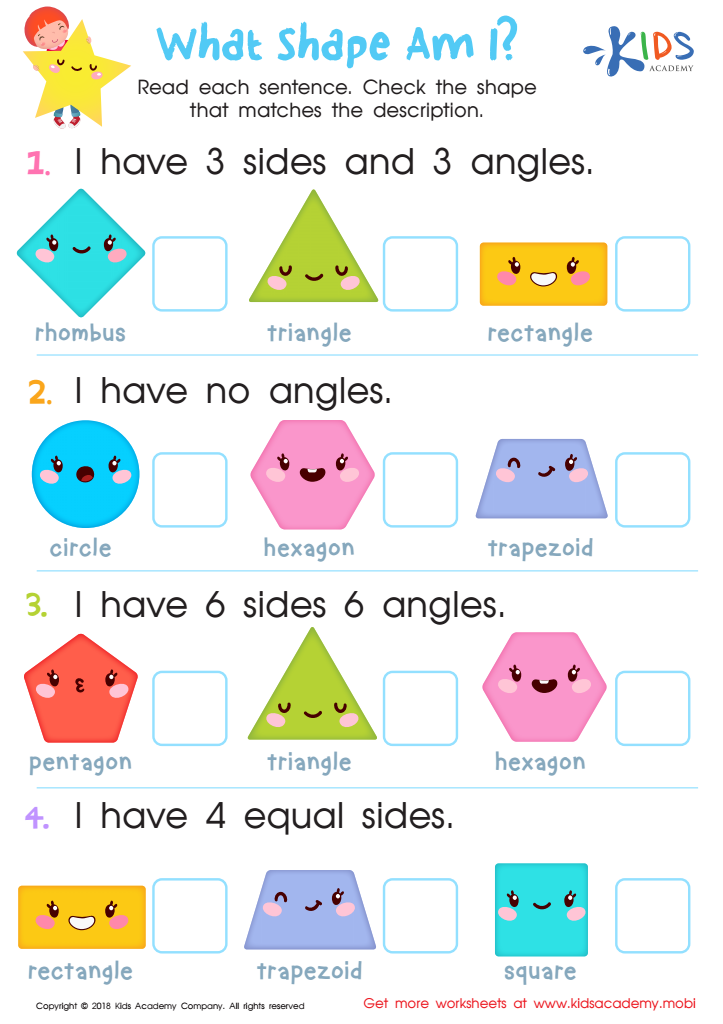

What Shape Am I? Worksheet
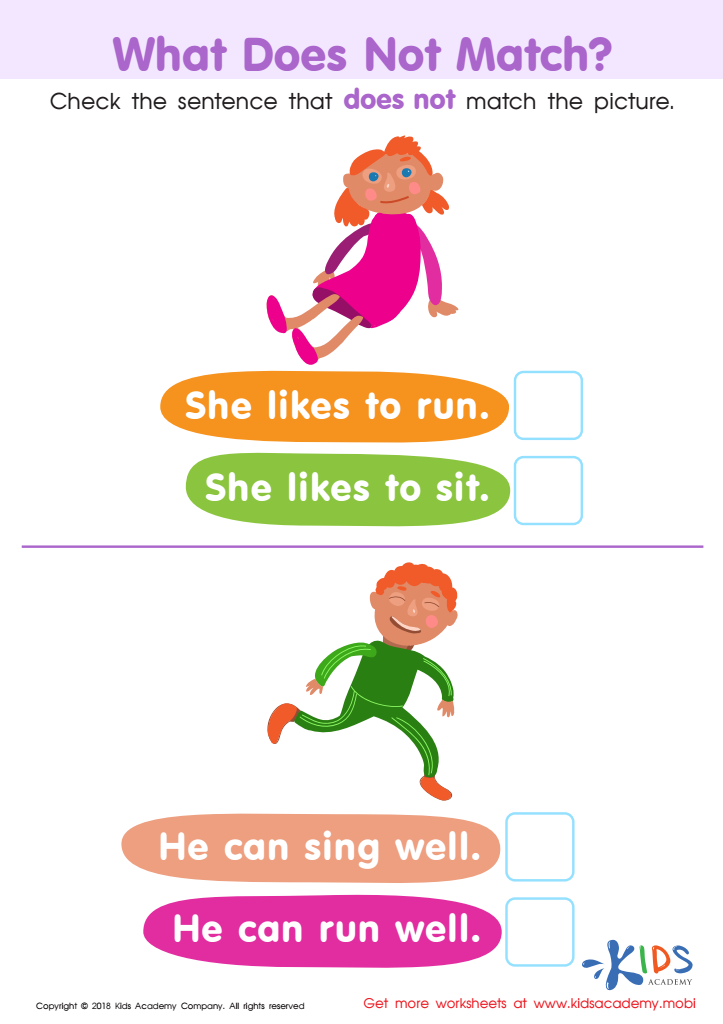

What Does Not Match? Worksheet
Visual discrimination is an essential skill for children aged 4-8, as it serves as the foundation for many areas of learning. This ability allows young learners to notice similarities and differences in shapes, colors, sizes, and patterns. Parents and teachers should care about visual discrimination because it influences a child's ability to read, write, and solve problems effectively.
When children develop strong visual discrimination skills, they can distinguish between letters and words, which enhances their reading abilities. For instance, recognizing the difference between 'b' and 'd' can help prevent common reading errors. Additionally, in math, visual discrimination aids in counting, sorting, and identifying geometric shapes, fostering overall mathematical understanding.
Moreover, improved visual perception contributes to everyday life skills. Children learn to navigate their environments, recognize important signs and symbols, and distinguish between everyday objects. Strong visual discrimination also boosts confidence and independence, encouraging children to explore and engage with the world around them.
Supporting the development of visual discrimination through fun activities, games, and exercises not only drives academic performance but also nurtures a love for learning. Ultimately, prioritizing these skills helps children thrive in school and beyond.
 Assign to My Students
Assign to My Students






